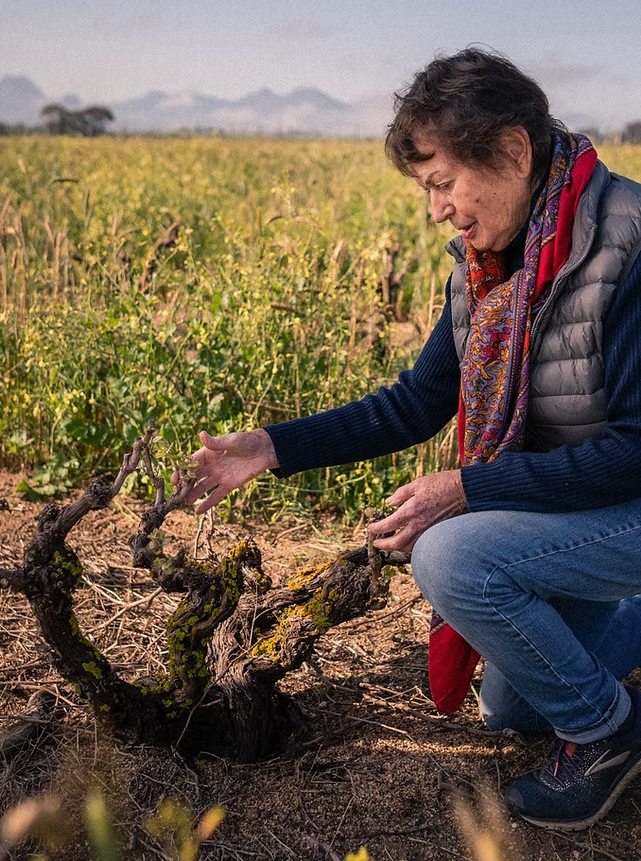Editorial: Old vines, young vines, hard choices
By Christian Eedes, 5 October 2025

Is the composition of South Africa’s vineyard plantings, taken in their entirety, truly fit for purpose? At first glance, the numbers are both revealing and slightly alarming. Chenin Blanc remains the country’s most planted variety at 18.4%, while Colombar ranks third at 10.4%. If you were imagining all of this as the material for deluxe bottlings, think again. By any reasonable measure, much of this crop is still destined for distillation. Attempts to elevate Colombar into a serious premium category are still, politely put, a work in progress.
And then there’s Cabernet Sauvignon, the fourth most planted at 10.1%. The explanation seems clear: much of it exists to ensure entry-level reds aren’t utterly insipid rather than to produce wines on the level of a Le Riche Reserve.
The structural challenge is obvious: a significant proportion of South African vineyards are not optimally planted to maximise either quality or profitability. Speaking at the South Africa Wine Summit in May, Rico Basson, CEO of umbrella body South African Wine, highlighted the urgent need for vineyard renewal. He suggested that ideally, 20% of the national vineyard should be five years old or younger to maintain a healthy pipeline of fruit. In reality, only 12% meets that benchmark, with Robertson, at 17%, coming closest. The message is clear: without renewal, the industry’s long-term viability is under threat.
This brings us neatly to the Old Vine Project, launched in 2016 by viticulturist Rosa Kruger. Its aim is twofold: firstly, to celebrate vineyards aged 35 years or older but secondly, to foster a culture of caring for young vines so they can one day reach old age in good health. Nearly 5,200 hectares of South African vineyards now carry the Old Vine certification out of a total of roughly 86,500 hectares nationally. The correlation between old vines and final wine quality is compelling, and the Certified Heritage Seal, backed by SAWIS, provides both credibility and a marketing tool.
The emphasis on old vines is not without debate, however. Respected producer Bruwer Raats, for example, promotes “quality by design,” demonstrating that young, strategically planted vines with carefully chosen clones and rootstocks can produce exceptional wines in a short time. His Eden project, begun in the early 2000s, illustrates that high-density, precision viticulture can yield quality that rivals or even surpasses older vines. Yet even Raats acknowledges that old vines – whether through intrinsic quality or the marketing sizzle they bring – still matter, as his Old Vine Chenin Blanc shows.
In a similar vein, super-star Eben Sadie changed the collective name of “Ouwingerd Reeks” (Old Vine Series) for his single-vineyard wines to “Distrik Reeks” (District Series) to allow for wines from more recently planted vineyards, his 2024 releases including a white field blend called Twiswind from a site planted in 2019 and a red called Sonvang planted in 2021.
The tension between young and old vines is real, but the conversation should not be about choosing one over the other. It is about managing both intelligently. Old vines inspire and create aspirational benchmarks – the “unicorns” of South African wine. They set identity and attract attention. But aspiration alone does not pay the bills. Young, well-managed vineyards ensure profitability, consistency, and the long-term survival of the industry.
The broader challenge facing South African wine mirrors this pressure. Demand, supply, overstock, and lack of cashflow are the unglamorous realities behind the attention-grabbing cult cuvées. For a time, wine farms could double as lifestyle projects or tax write-offs. Those days are over. Today, a farm must be a functioning business, which means confronting the brutal economics of labour, energy, logistics, and a shrinking pool of consumers willing or able to pay top dollar. Push prices too far, and your “aspirational” wine ends up admired from afar, but never actually consumed – a costly illusion of success.
Solutions aren’t simple, but here’s a path forward. Wine producers can’t necessarily cling to pride in reputation or old brand values as today’s market is too fast-moving, and stubbornness risks lost sales and relevance. Quality should be measured not by what a winemaker thinks a bottle “should” fetch, but by what consumers see as fair value. Producers need to focus on wines with steady demand and manageable costs while still nurturing the rare, exclusive bottles that define their identity. And I’ll say it again: Wine culture should be inclusive, inspiring, and uplifting. Above all, it should be fun. Part of a life well lived, not a way to show off cash or status.
South African wine is world-class, but world-class quality alone will not keep the lights on. Diversification, adaptive business models, and strategic vineyard management are essential. The Old Vine Project demonstrates how thoughtful stewardship of both old and young vineyards can support prestige, aspiration, and profitability at the same time.
Entries for the second annual Old Vine Report close at midnight on Wednesday, 8 October. To enter, click here.








Comments
0 comment(s)
Please read our Comments Policy here.